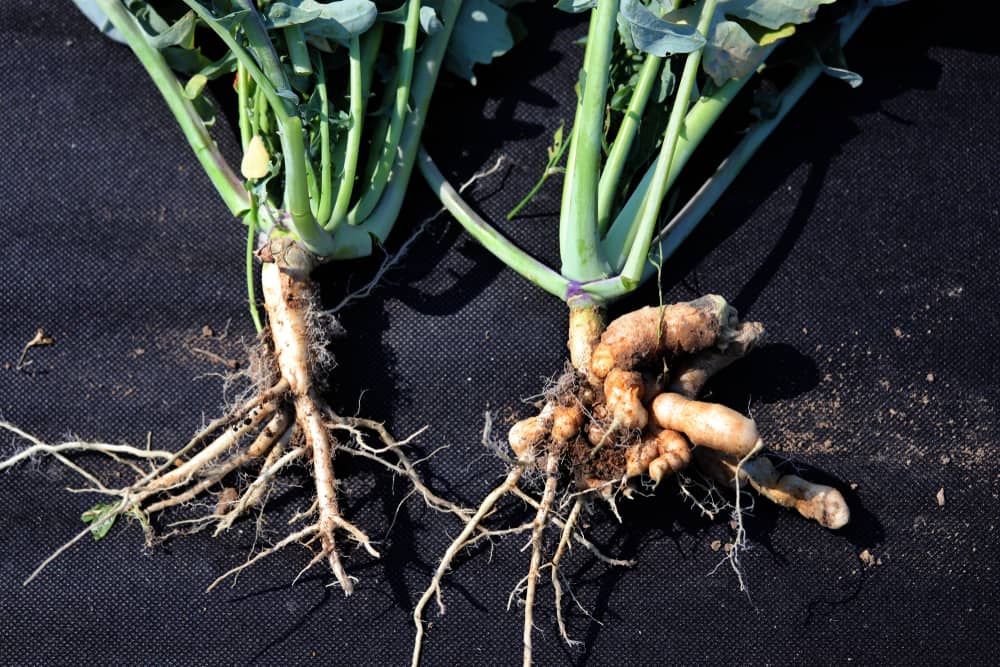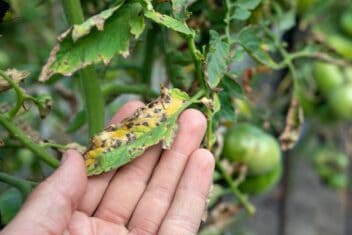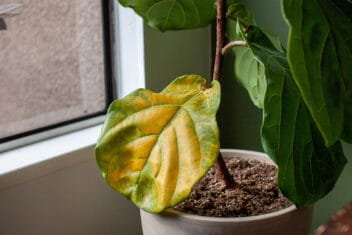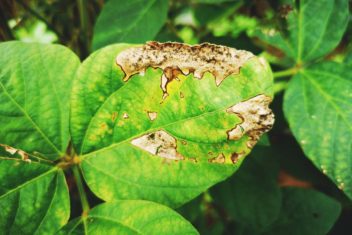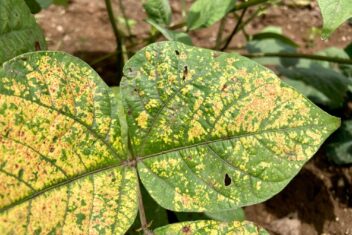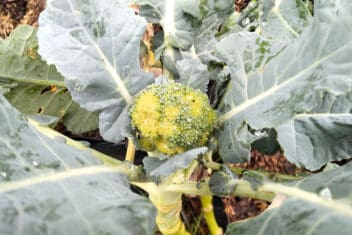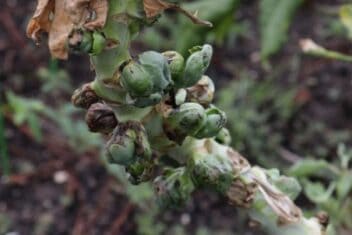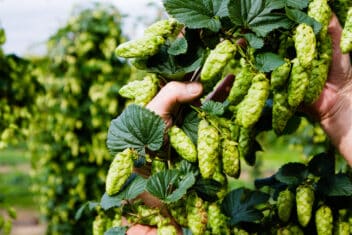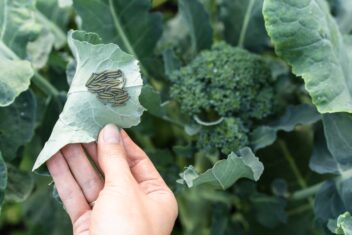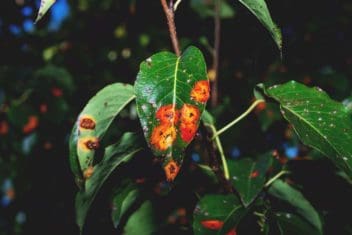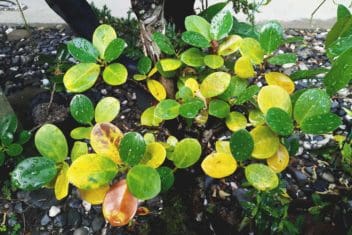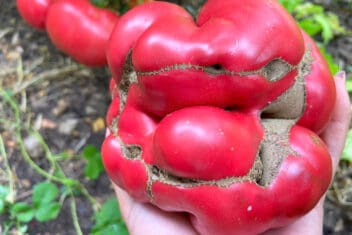In our garden, brassicas make up the majority of vegetables. We’re big fans of sauerkraut, broccoli soup, and brussels sprouts. Brassicas are easy to grow, and they thrive in our cool, northern climate. But brassicas are susceptible to some frustrating diseases, and clubroot is one of the most pervasive.
What is Clubroot?
Soil is a constantly changing environment, full of living things. Some of those living things are beneficial, but other soil-borne fungi and pathogens can be devastating to your crops. Clubroot is a bad soil fungus called Plasmodiophora brassicae.
The inclusion of “brassicae” in its name indicates just how attached this fungus is to the brassica family of vegetables.
Affected roots swell up, becoming deformed and misshapen, like fat little clubs. The swollen roots become cracked and rot, which makes it difficult for the plant to absorb nutrients. Because of this, the plants often fail to thrive. They grow slowly with wilted, brown, or yellow leaves. Cabbages affected with clubroot often fail to head.
The disease can have a massive economic impact on farmers.
Clubroot can end up causing total crop failure, especially if it’s been affecting a field for years. Clubroot spores can enter the garden through transplants, so it’s easy to invite a sudden infestation of spores simply by buying infested seedlings at the local garden store.
Since so many gardeners buy and share seedlings, if clubroot hasn’t affected your brassicas yet, it likely will at some point, so let’s be prepared!
Why Is It So Damaging?
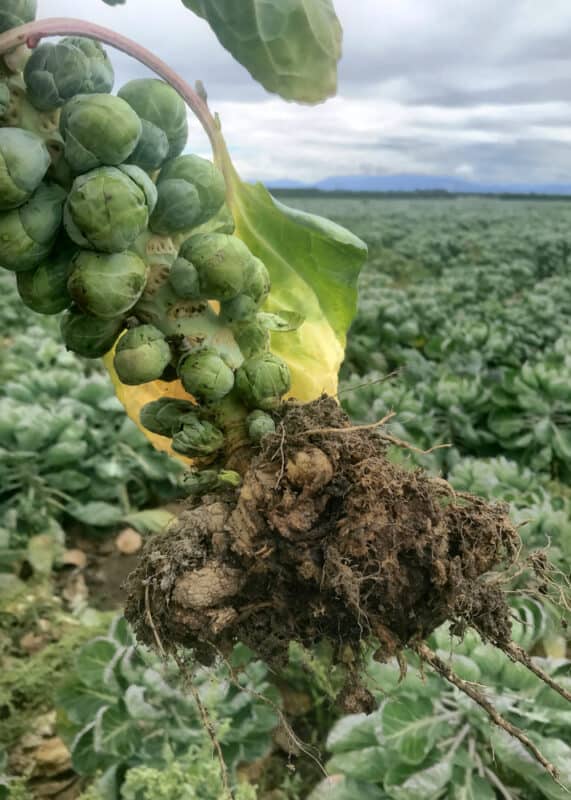
Clubroot can destroy your brassica harvest. At best, infected plants will produce smaller yields – but left unchecked clubroot can cause your harvest to fail entirely. Worst of all, a clubroot infestation doesn’t end with the growing season. Plasmodiophora brassicae spores can live in the soil for 10–20 years without a host plant.
This means that even if you leave your garden fallow, or grow clubroot-resistant crops for years, spores are still waiting in the soil to infect a new generation of brassicas.
A Versatile Pathogen
Clubroot infects over 300 different species of cruciferous plants, jumping from species to species with ease. With such versatility and staying power, it’s almost impossible to eradicate clubroot through crop rotation. That doesn’t mean crop rotation is useless in this case – planting jalapenos in last year’s cabbage bed will give you a break from clubroot battles.
But don’t expect crop rotation to eradicate this pathogen. It can wait in the soil for years to ruin another crop of brassicas.
Along with clubroot’s epic staying power, it’s also an easy-to-spread pathogen. P. brassicae can be transmitted by contaminated transplants, manure, spore carrying animals, and even rain and irrigation. Essentially, almost anything can carry clubroot spores into your garden.
As with almost every other garden pathogen, this is another reminder to keep your garden clean. Pull those weeds, turn that compost, and avoid bringing unhealthy-looking seedlings into the garden. A clean, airy garden resists fungal spores of all types better than an untidy garden.
If clubroot sounds like a gardener’s worst nightmare, that’s because it is. But don’t worry, like all nightmares, there’s always a way to wake up!
Recognizing Clubroot
So how can you know if clubroot is affecting your garden? From the top, the signs of clubroot are similar to a host of other issues. But once you dig deeper, clubroot is unmistakable.
Imagine walking out into your garden. The tomatoes are turning red and orange. Round, green pumpkins are getting fat on the vine. But what’s happening in the cabbage bed? No heads are forming, the leaves are looking wilted, and the plants look stunted and yellowish.
Stunted, yellowish plants could be a sign that your soil is poor. It could signify black rot or an aphid infestation. But, if your cabbage patch matches this description, or if only one or two cabbage plants look weak and undernourished, it’s time to check the roots.
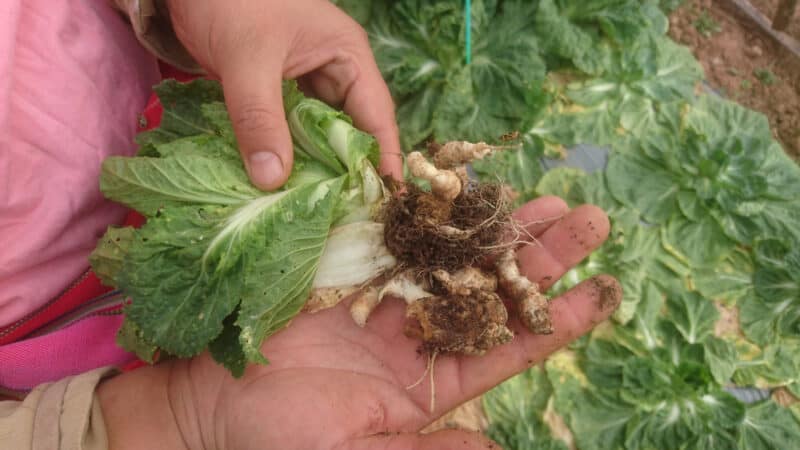
Gently and carefully uproot one of the sickly cabbage plants. If clubroot is affecting the plants, you’ll see fat, lumpy “clubs” intermingled with healthy, fibrous roots. If there’s no sign of clubroot, go ahead and gently replant the cabbage.
Disposal
But, if you see clubroot, it’s time to dispose of your infected plants. Once a plant is infected, all you can do is get it out of the soil as quickly as possible. Check each of the unhealthy plants. You can put the affected plants in a bucket so they don’t touch the soil and spread spores any further.
After removing all the contaminated plants, clean any tools you’ve used with a bleach and water solution. Rinse out the bucket you carried the infected plants in as well. Don’t compost plants with clubroot. Instead, burn them well away from the garden. If burning isn’t an option for you, put the infected plants in a trash bag and throw them any.
If you compost your infected brassicas, you’ll be feeding P. brassicae spores back into the garden every time you compost. If you simply dump them in an unused part of the yard, you run the risk of an animal tracking the spores back into the garden. It’s better to get rid of those clubroot-infested plants entirely.
Time for Some Good News
As awful and invasive as clubroot is, don’t write off your garden yet. Clubroot may infest easily and last practically forever, but you can mitigate its impact. Infested gardens aren’t doomed to failure. But you have to take steps to limit how and when clubroot can flare-up.
Holding Back the Pathogens
One of the easiest ways to stop P. brassicae spores in the soil from causing clubroot in your brassicas is by raising the pH of your soil. Acidic or neutral soil provides an ideal environment for clubroot spores. Slightly basic soil, with a pH around 7.1 or 7.2 will repress the spores. They’re still lurking in the soil, but they can’t do anything. Clubroot needs acidic soil to thrive.
If you’ve noticed signs of clubroot, add agricultural lime to the soil. It’s helpful to have a soil testing kit that measures the pH. Throughout the growing season, take 2-3 soil samples and add lime, oyster shells, or potash to alkalize the soil.
Crop rotation is another way to mitigate clubroot’s impact on your harvest. Of course, it’s not going to do anything about the P. brassicae spores in the soil. Since the spores last for up to 20 years without a host plant, a few years growing potatoes in place of cabbages isn’t going to cleanse the soil.
But while crop rotation isn’t going to cure your fields of clubroot, it is a great way to minimize the damage while you take a year to mount a defense. Give your P. brassicae spores some nightshades to chew on for a year or two and then surprise them with a clubroot-resistant variety of brassica. In this battle, crop rotation is the strategic retreat that allows you to come back stronger next season.
Solarizing the Soil
Despite rumors to the contrary, solarizing the soil in your garden won’t kill off P. brassicae completely. Like all clubroot containment strategies, solarizing has limited success against those intrepid spores. But, if you’re having persistent issues with clubroot, solarization is your best weapon.
To solarize soil, cover the bed completely with a clear, plastic tarp. Weigh the tarp down to make sure that it doesn’t lift up in wind. The goal is to isolate the solarized soil from wind and rain while intensifying its exposure to the sun.
Keep the tarp covering your soil for at least 5 weeks, but ideally no more than 8 weeks. Pick the hottest, sunniest 5 weeks of the year. Let the hot, summer sun beat down on that patch of soil. At the end of your solarization, any pathogens, fungi, weeds, and even invasive insects will be greatly reduced.
We have an entire guide to help you solarize your soil effectively.
Even P. brassicae spores are weakened by a couple of months under the hot sun. So if you need to get clubroot under control, start with solarization.
Clubroot Resistance
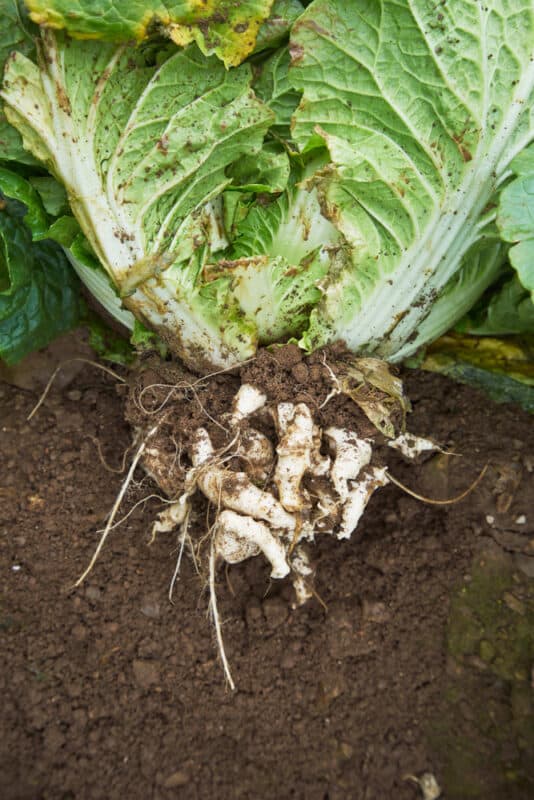
Once you’ve discovered clubroot in your soil, it’s a good idea to plant a few clubroot-resistant varieties. That way, even if your P. brassicae containment methods fail, your harvest will still succeed.
Clubroot has been a problem for farmers and gardeners since the 13th century. We’ve had over 700 years to develop a few consistently clubroot hardy varieties of cabbages, brussels sprouts, cauliflower, and broccoli.
If you’re not confident that clubroot is contained in your soil, hybrids like brussels sprout ‘Crispus F1’ and clubroot resistant cabbage ‘Kilaxy’ are fantastic options. In the past 100 years, newly resistant varieties have hit the market. Don’t be afraid to try out a few clubroot-resistant cultivars.
